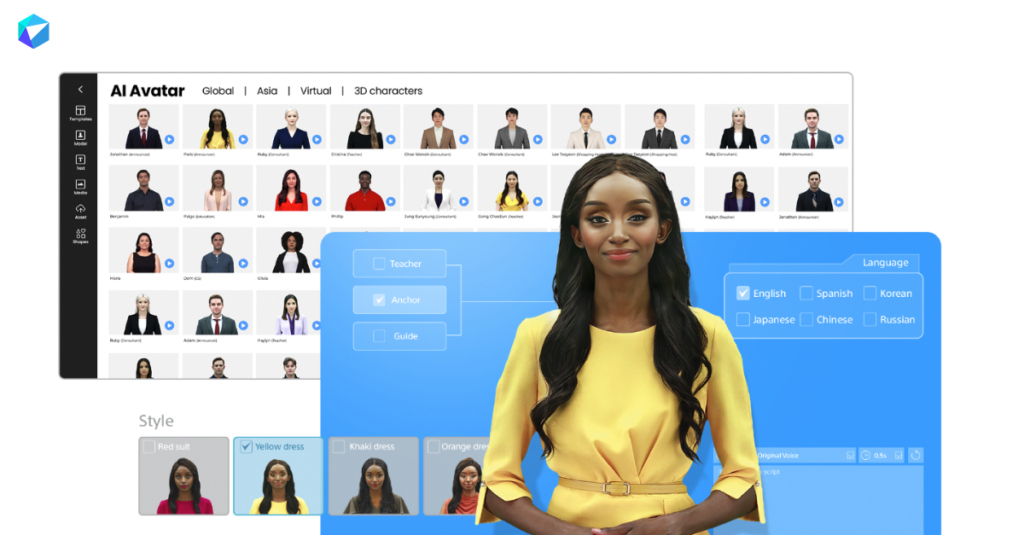Journalism is currently experiencing a remarkable transformation fueled by advances in Artificial Intelligence (AI). AI-generated news was once just science fiction, but today, it exists as reality, dramatically altering how news is produced, distributed, and consumed. We explore its ramifications for modern journalism and its effect on the media landscape. This article delves deeper into its benefits, challenges, and impactful role within our contemporary media environment.
Understanding AI-Generated News
AI-generated news uses artificial intelligence (AI) technologies such as machine learning algorithms, natural language processing and NLP to automate different aspects of news production. This includes content creation, curation, and dissemination. AI-generated journalism relies on algorithms to create and distribute content to audiences, unlike traditional news reporting, which heavily relies on journalists.
AI Technology in Modern Journalism
Artificial intelligence has revolutionized journalism production, distribution, and consumption. AI-enabled tools and platforms enable news organizations to streamline editorial workflows while analyzing vast amounts of data and delivering customized content directly to audiences. Furthermore, news algorithms powered by artificial intelligence may identify emerging trends or detect patterns humans might miss while simultaneously increasing coverage depth and accuracy.
Implications for Journalistic Integrity and Ethics
AI-generated news offers many advantages; however, its use also raises important ethical considerations regarding journalistic integrity and ethics. Issues regarding misinformation, bias, and algorithm transparency have spurred conversations regarding AI’s ethical use within journalism; therefore, news organizations must uphold moral standards while using AI technologies transparently to maintain public trust and credibility.
Enhancing Efficiency and Speed in News Production
AI news generation can increase the efficiency and speed of news production. AI automates repetitive tasks like data analysis, fact-checking, and other tedious activities, allowing journalists to focus on more valuable, creative work. News organizations can deliver real-time, accurate updates to their audiences. This keeps them informed of all the recent happenings.
Personalization and Audience Engagement
AI-generated news allows organizations to customize content based on individual tastes and interests by employing AI algorithms to monitor user data and behavior analysis, providing tailored recommendations to audiences – increasing audience engagement while strengthening brand loyalty in turn.
Combatting Disinformation and Fake News
With rampant misinformation and fake news sweeping across our world today, AI-generated news may prove instrumental in combatting misinformation and improving news content quality. AI fact-checking tools can verify the information for accuracy while simultaneously detecting false or misleading claims to stop their spread – helping prevent disinformation from spreading further by social media trends or online conversations containing misinformation or fake news in real-time. Furthermore, social media analysis AI algorithms may detect or even mitigate phony news as it occurs – all crucial ways against its spread!
Legal and Regulatory Considerations
With AI-generated news gaining ground in journalism, discussions around legal and regulatory considerations in journalism are increasingly prominent. News organizations must comply with existing laws pertaining to data privacy, intellectual property ownership and freedom of speech. At the same time, policymakers may also need to create new regulatory frameworks to address ethical considerations and ensure responsible AI governance in this industry.
Collaborative Journalism: Humans and AI Join Forces
AI technologies may have the ability to streamline some aspects of news production; however, human journalists remain crucial contributors in any newsroom environment. Collaborative journalism combines human expertise with AI systems to leverage both strengths to produce comprehensive, accurate, and impactful coverage of news stories.
Impact on Newsroom Dynamics and Employment
AI’s introduction into newsrooms may significantly impact dynamics and employment within an organization, particularly employment matters. While AI-powered automation may streamline some tasks and boost efficiency, this innovation also raises concerns over job displacement as well as future journalism careers. News organizations must invest in upskilling programs so their journalists are equipped with the required skills for working alongside AI technologies.
Accessibility and Inclusivity in News Consumption
AI-generated news holds the promise of improving access and inclusivity in news consumption. By offering multilingual support, translation services, alternative formats for those living with disabilities and AI-powered personalization algorithms that ensure all content remains engaging for each reader regardless of background or preferences, news organizations can make news content more readily accessible for diverse audiences.
AI-Generated News in Different Domains
AI-Generated News in Different Domains Artificial intelligence-generated news does not occupy just one niche. Still, it has multiple uses across several areas, from politics and sports journalism to financial news reporting and entertainment coverage. When applied to political reporting, artificial intelligence algorithms can analyze election data, predict electoral outcomes, and offer insight into voter behavior; for sports journalism, AI-powered analytics platforms can generate real-time statistics, highlight key moments, and deliver tailored coverage of fans while applied to financial news AI can analyze market trends and stock prices and offer invaluable advice for investors.
Challenges and Limitations of AI-Generated News
AI-Generated News AI-generated news may present many advantages; however, it also presents several obstacles and drawbacks that must be managed carefully in order to maximize its use effectively. Issues including algorithmic bias and error rates could compromise accuracy and reliability, and ethical concerns must also be taken into consideration by news organizations and policymakers when producing AI content.
Case Studies and Success Stories
In order to demonstrate the practical applications and implications of AI-generated news, organizations must examine real-world case studies and success stories relating to its applications in newsrooms or startups developing AI news platforms. From news organizations using AI for automated content generation through automated platforms to startups launching unique news AI platforms – there are multiple examples where AI technologies have transformed newsrooms around the globe – by looking into real-life examples, news organizations can gain inspiration for their own AI initiatives, and gain a competitive edge by doing research or studying such case studies/success stories they may gain insights for use when taking on similar AI initiatives themselves.
Future Trends and Innovations
Future Trends and Innovations Artificial intelligence-generated news promises innovation and expansion. AI technology is rapidly advancing, and new opportunities are emerging. From AI-powered news platforms to personalizing the delivery of content that engages their audience more directly, there seems no end to what can be achieved. News organizations that stay abreast with these developments can be at the forefront of an evolving media landscape.
Ethical Guidelines and Best Practices
Ethical Guidelines and Best Practices In order to foster ethical AI governance within the news industry, it is crucial that ethical guidelines and best practices for its use be developed and followed. Organizations must prioritize principles such as fairness, accuracy and objectivity when using AI algorithms while transparency and accountability play critical roles in building trust between themselves and audiences.
Public Perception and Trust in AI-Generated News
Establishing trust and credibility is crucial in building acceptance and adoption for AI-generated news sources, meaning news organizations must educate the public on AI technologies used for journalism purposes as well as address any misconceptions related to such content. By being open about their use of AI algorithms while adhering to ethical standards, news organizations can develop public trust for the products they distribute.
Policy Recommendations and Frameworks
Policymakers play an integral part in shaping the regulatory framework governing AI-generated news. The regulator should strike an equilibrium between innovation and competition as well as protect consumer rights and public interests and protect consumer rights and public interest protection. Policymakers should collaborate with stakeholders to create ethical guidelines or regulatory frameworks that address concerns about privacy, data security, and algorithmic transparency.
Education and Training Initiatives
Educational and training initiatives are vitally important to equip journalists with the skillset required for working alongside artificial intelligence technologies. Journalism schools should incorporate AI literacy classes into their curricula as part of overall journalism education, offering specific AI technologies courses as required by news organizations whose journalists need proficiency using these platforms or tools effectively.


